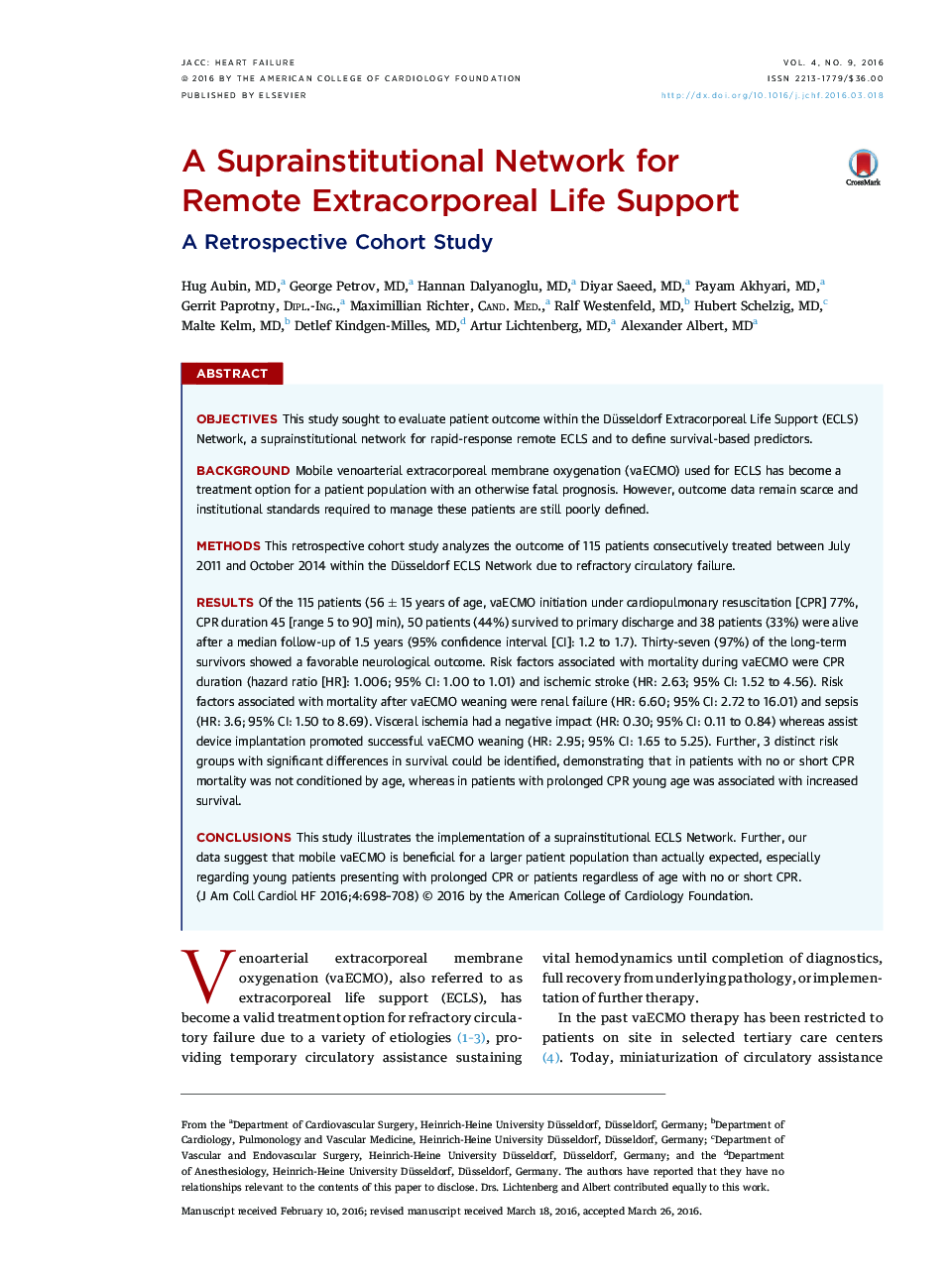| Article ID | Journal | Published Year | Pages | File Type |
|---|---|---|---|---|
| 2942302 | JACC: Heart Failure | 2016 | 11 Pages |
ObjectivesThis study sought to evaluate patient outcome within the Düsseldorf Extracorporeal Life Support (ECLS) Network, a suprainstitutional network for rapid-response remote ECLS and to define survival-based predictors.BackgroundMobile venoarterial extracorporeal membrane oxygenation (vaECMO) used for ECLS has become a treatment option for a patient population with an otherwise fatal prognosis. However, outcome data remain scarce and institutional standards required to manage these patients are still poorly defined.MethodsThis retrospective cohort study analyzes the outcome of 115 patients consecutively treated between July 2011 and October 2014 within the Düsseldorf ECLS Network due to refractory circulatory failure.ResultsOf the 115 patients (56 ± 15 years of age, vaECMO initiation under cardiopulmonary resuscitation [CPR] 77%, CPR duration 45 [range 5 to 90] min), 50 patients (44%) survived to primary discharge and 38 patients (33%) were alive after a median follow-up of 1.5 years (95% confidence interval [CI]: 1.2 to 1.7). Thirty-seven (97%) of the long-term survivors showed a favorable neurological outcome. Risk factors associated with mortality during vaECMO were CPR duration (hazard ratio [HR]: 1.006; 95% CI: 1.00 to 1.01) and ischemic stroke (HR: 2.63; 95% CI: 1.52 to 4.56). Risk factors associated with mortality after vaECMO weaning were renal failure (HR: 6.60; 95% CI: 2.72 to 16.01) and sepsis (HR: 3.6; 95% CI: 1.50 to 8.69). Visceral ischemia had a negative impact (HR: 0.30; 95% CI: 0.11 to 0.84) whereas assist device implantation promoted successful vaECMO weaning (HR: 2.95; 95% CI: 1.65 to 5.25). Further, 3 distinct risk groups with significant differences in survival could be identified, demonstrating that in patients with no or short CPR mortality was not conditioned by age, whereas in patients with prolonged CPR young age was associated with increased survival.ConclusionsThis study illustrates the implementation of a suprainstitutional ECLS Network. Further, our data suggest that mobile vaECMO is beneficial for a larger patient population than actually expected, especially regarding young patients presenting with prolonged CPR or patients regardless of age with no or short CPR.
